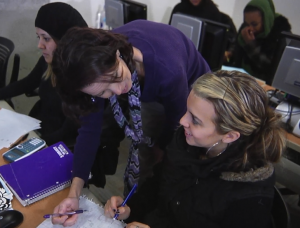Like many of its peers, Utah’s Salt Lake Community College (SLCC) has been focusing recently on how to boost student performance in math. Participating in the Kaleidoscope Open Course Initiative supported by Lumen Learning, SLCC decided to explore whether MyOpenMath, an online math system designed using open educational resources, could yield better student learning outcomes than a comparable commercial system - and at a much lower cost to students.
The answer? Yes. Absolutely, positively yes.
Our newest OER success story is all about the experience of Salt Lake Community College. It’s well worth reading especially if you’re interested in quantitative evidence about the impact of open content. The OER difference is both striking and statistically significant:
- More A students.
- More students passing the course.
- More students persisting to complete the course.
- More than $48,000 in cost savings shared by 250 students during the pilot term, averaging nearly $200 per student.
Read the whole story - including all the great data points - here: http://lumenlearning.com/success-story-slcc/
As SLCC Math Department Chair Suzanne Mozdy said in a video interview describing her experience, “They’re getting the math. They’re engaging with the math, and they’re learning it.”
Recognizing the ongoing benefit open educational resources offer students, academic leaders at SLCC took a progressive approach to sustain the impact of OER over time. They instituted a $10 course materials fee on OER-based courses to fund both Lumen Learning’s nominal per student courseware support fee and faculty professional development related to open education. Not surprisingly, students strongly prefer the $5 course fee to the $200+ textbook and access code fees required in non-OER courses and sections.
As SLCC discovered, why on earth would we ask students to pay more and learn less?
That’s what we call “getting the math.”


